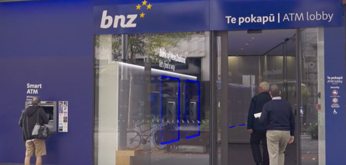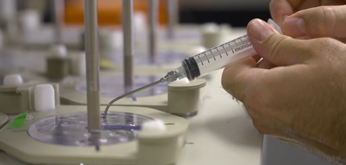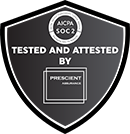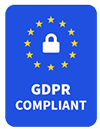3rd June 2020
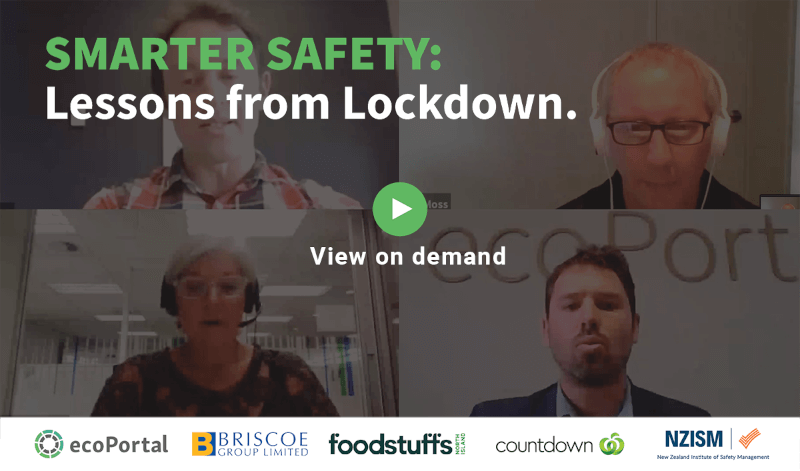
ecoPortal’s Smarter Safely Virtual Summit brought together key representatives from three retail giants to share the lessons they learned while the nation was under lockdown.
The latest statistics from Retail New Zealand paint a bleak picture of the retail market– all except the major supermarkets. Statistics New Zealand reported a jump in grocery sales of $376 million (17 percent) in March.
However, the supermarkets weren’t solely managing a huge surge in demand, but were also dealing with a nervous public and staff, unusual levels of government scrutiny, and an unequaled health and safety crisis - in other words; blazes raging on multiple fronts. As Michelle Cooper, Head of Safety and Wellbeing at Foodstuffs put it, COVID-19 has been “a baptism of fire that no one was really prepared for.”
The systems and processes they established during level four has paved the way for retailers in level two and one, retailers who now also must manage the elevated safety risks to their teams and customers.
Joining Michelle were Ben Sheidow, Head of Health, Safety and Wellbeing for Woolworths NZ, and Briscoes’ GM of Human Resources, Aston Moss.
So, what did they learn, and what advice would they give businesses through alert level two, one, and beyond?
1. Start with a robust health and safety framework
Our speakers found that because their organisations already had effective health and safety frameworks in place, they could move beyond box-checking.
“If there was ever a time to get the basics of health and safety right – it’s now!” Michelle said.
Excellent hand hygiene, already established in both supermarket brands, was further elevated. Protocols for protecting staff and their families after work were developed too, along with measures like staggered shifts and second lunch areas to help staff maintain physical distance.
It also meant providing clarity on definitions; what actually does constitute an at-risk person?
Michelle says their established health and safety framework helped them to better manage relationships with WorkSafe and the Ministry of Health.
“What reassured those bodies was having a robust framework for how we were going to keep people safe for them to review,” Michelle explains.
Although there’s a lot more information available now that we’re in level two, Michelle encourages businesses to take advantage of any resources available from industry bodies – but carefully consider what it all means for you, your business and your staff. This will be easier to achieve if you already have clear guidelines around health and safety, she adds.
2. Collaboration over competition
One of the biggest challenges was dealing with different government departments and regulatory bodies – information regarding the virus was conflicting and changing daily. To overcome this, the supermarket industry banded together in solidarity.
“We figured out very early on in the piece that if we stood together and helped each other out then it would be better for everybody,” says Michelle.
“We needed to find consistency, so we sat down with all parties to communicate what we were doing, to make sure there was a shared understanding,” Ben said.
“We had various representatives working with the government agencies across all streams so there was a very clear message coming from all supermarkets,” Michelle adds.
Aston couldn’t agree more and says "now is not the time to be mindful of competitive restraints. A coordinated and consistent approach across sectors will help employees and customers feel confident that their safety is top priority".
3. Use technology to streamline and communicate
As the UN reports, digital technologies have been critical in facing the COVID-19 pandemic, and they’ve played a key role in how well businesses have responded to the threat. Aston says they’ve used their platforms extensively – not only to share important information with their staff - but keep a close eye on how everyone is feeling.
“Unlike our colleagues in supermarkets, our team was home, so our ability to communicate with them was somewhat diminished. We already had a communications and e-learning platform in place [Axonify], and we drove engagement to 98%, with people logging in every couple of days.
"ecoPortal health and safety software also became an incredibly important part of our response. We used it as part of our shift monitoring, so we’ve got one centralised, electronic record right across the country,” explains Aston.
For Woolworths NZ, technology helped streamline processes, so they didn’t overwhelm an already fatigued and nervous workforce.
“It was important when we introduced things like the virtual queuing system. Additions that were simple and non-invasive because we knew stores were busy and didn’t have the time to fill out pieces of paper or manage privacy aspects to the typical level,” Ben says.
With the shift into level two and one, technology will play an even bigger role, especially with contact tracing. Businesses should look for ways to utilise any current systems, and if limited by capacity or functionality, invest in new technology.
4. Public perception is reality
A key part of dealing with any crisis is proactively managing public perception.
For the supermarket industry in particular, this started with physical distancing. Ben and Michelle spoke about taking into consideration the Ministry of Health guidelines, as well as what was being communicated to the general public.
“We learnt very early on that public perception was king. Public perception became the two-metre rule because that’s what was on television. Across all the supermarkets we agreed that we should just run with it.
“Consequently, it’s served us well, and provided peace of mind for both customers and team members,” Michelle says.
Ben agrees, saying they took feedback from their team and customers.
“This ensured we had the right processes in place to give them – and customers – comfort,” Ben said.
Despite the Ministry of Health recommending against the need for PPE, Briscoes invested in a good supply of masks and gloves.
“It provided reassurance to the team. We saw a really good uptake and the team was thankful to have masks to wear. It was more about the psychological impact,” Aston explains.
In the end, the goal is to find a solution that provides peace of mind for your staff and customers - so they feel safe to work and shop.
5. Clear, concise, compassionate leadership
According to a Forbes report, our ability to process information reduces drastically by 80% during high-stress situations, impacting on job performance, productivity, quality, and compromising safety. Therefore, those leading the response must engage differently and support their people to move forward through these emotions.
“Our CEO, Chris Quinn, set an amazing tone. He was clear and it was apparent right from the get-go that someone was in charge. There were really clear expectations which I think helped everybody in the business cope,” Michelle said.
From a health and safety perspective in the context of COVID-19, it became less about compliance and ticking boxes, and more about genuinely interacting with people with compassion and integrity.
“The fear will linger so it needs to stay top of mind. It’s about staying close to customers and your teams, reaching out and asking if they’re ok”.
“We’ve had good leadership and great management and follow-through from our team – engaging with us even remotely,” says Aston.
In times of crisis, employees look to their organisational leaders for reassurance and guidance. The best thing you can do for your people is talk to them – and do it often. Make sure they feel safe in their work, and if they don’t, rectify that quickly. Work with your leadership to forge a clear path forward.
Use COVID-19 to futureproof your health and safety
There’s a great deal we can learn from those who have already had to wade through the thick of COVID-19. As Ben points out, “as we go into flu season, this can help reduce the spread of illness, not just COVID-19.”
To start, reassess your health and safety framework – is it robust and agile? What extra health and safety measures can you put in place? Then, connect with others in your industry to discover if there are ways you can facilitate collaboration that will benefit everyone.
Invest in technology to streamline processes, turn up with integrity, check on your people every day, provide clarity and lead with a true sense of direction.
While the COVID-19 crisis may be under control in NZ, establishing the groundwork now will set you up for future success. The reality is, people are scared and will continue to be for some time. Everything you do from here on in needs to help your staff and customers feel safe.
As Aston explains, “You can guarantee this isn’t the last challenge we’ll need to face. The nature of it is unique, but next time it’ll be differently unique, so let’s make sure we have underlying qualities that’ll let us go forward.”



